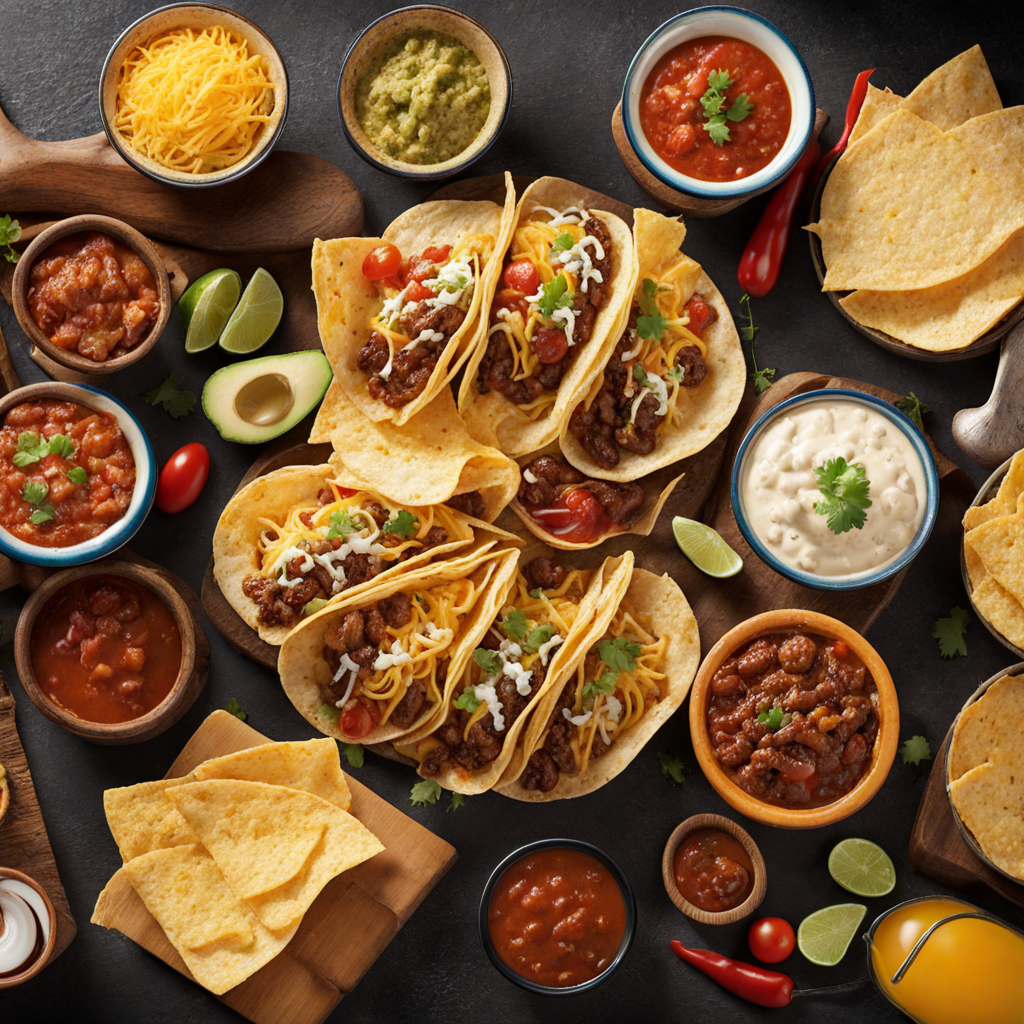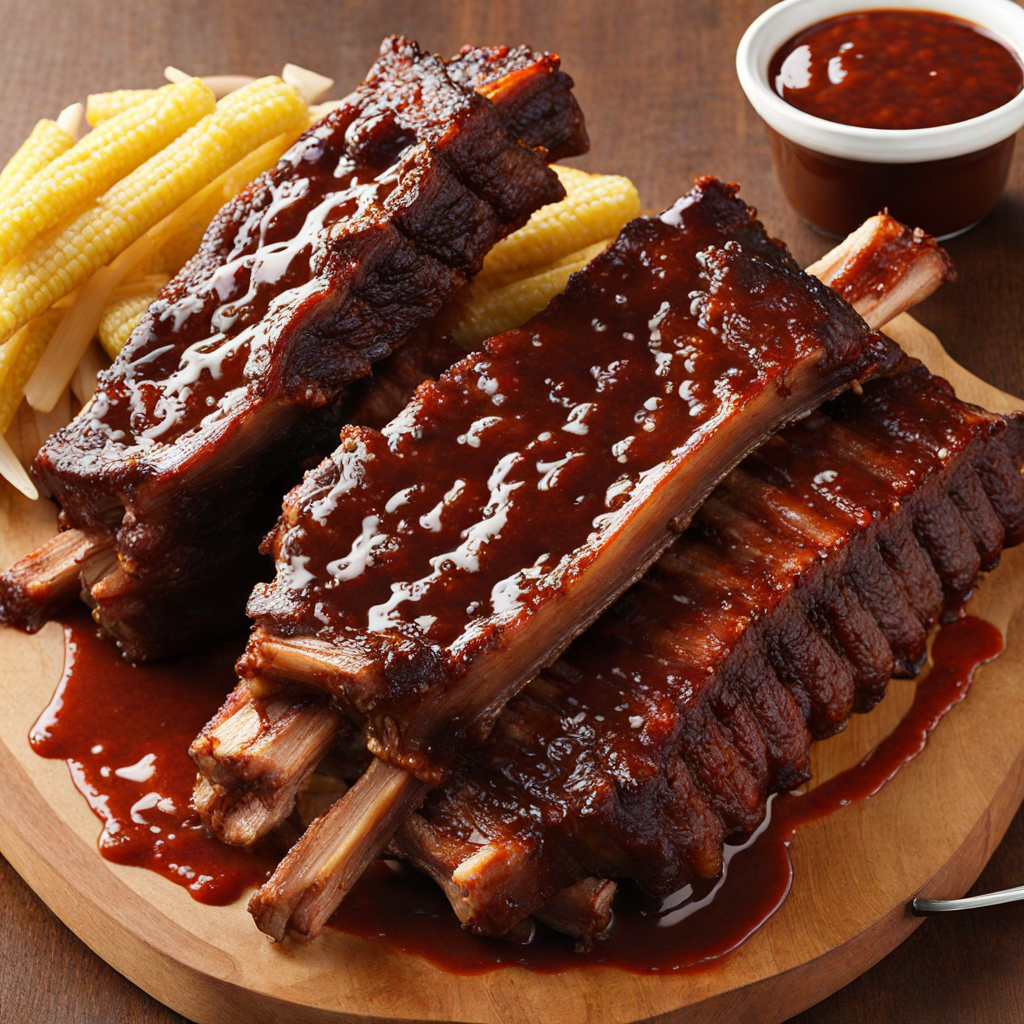Bagel and Lox
Bagel and Lox is a quintessential American dish that beautifully marries the chewy, dense texture of a freshly baked bagel with the rich, savory flavor of lox, which is thinly sliced cured salmon. The bagel, often boiled before baking to achieve its iconic crust and chewy interior, serves as the perfect vehicle for the lox. Traditionally, a plain or everything bagel is used, enhancing the overall experience with its subtle flavor profile. The combination of the warm bagel and the cool, silky lox creates an appealing contrast that excites the palate. To elevate this dish further, cream cheese is typically spread generously on the bagel before the lox is layered atop. This creamy, tangy spread complements the salty, smoky notes of the lox, creating a harmonious blend of flavors. Many variations also include toppings such as capers, sliced tomatoes, red onions, and fresh dill, each adding their unique taste and texture, contributing to a more complex and satisfying bite. The interplay of these ingredients not only enhances the overall flavor but also adds visual appeal. Bagel and Lox is not just a meal; it’s an experience that captures the essence of brunch culture in the United States. Often enjoyed with a cup of coffee or a glass of fresh juice, this dish embodies comfort and indulgence, making it a beloved choice for leisurely weekend breakfasts or brunch gatherings. For those looking to explore new tastes, Bagel and Lox offers a delightful blend of flavors and textures that is sure to leave a lasting impression.
How It Became This Dish
The Delicious Journey of Bagel and Lox: A Cultural Culinary Icon #### Origins: A Culinary Partnership The story of bagel and lox is deeply intertwined with Jewish immigration and the evolution of American cuisine. Bagels, with their distinctive ring shape and chewy texture, trace their origins back to Eastern Europe, particularly Poland, where they were a staple for Jewish communities. The earliest mention of bagels dates to the 17th century, but they gained widespread popularity in the 19th century. Jewish bakers in cities like Krakow and Warsaw would make these boiled and baked breads, often served with various toppings. Lox, on the other hand, has a different yet complementary history. The term “lox” comes from the Yiddish word *laks*, meaning salmon. Traditionally, lox referred to salmon that was cured in brine. This method of preservation was essential for Jewish communities who sought to enjoy fish long after it was caught. Lox was not just a food item but a vital part of the Jewish dietary laws, making it an integral element in Jewish cuisine. The pairing of bagels and lox can be attributed to the Jewish communities in the United States, particularly in the early 20th century. As Jewish immigrants settled in cities like New York, they brought their culinary traditions with them. The combination of the chewy bagel and the salty, rich lox became a staple breakfast dish, often accompanied by cream cheese, capers, and onions. #### Cultural Significance: A Symbol of Jewish Identity Bagel and lox became more than just a meal; they morphed into a symbol of Jewish identity and community. The dish is often associated with Jewish celebrations, family gatherings, and brunches. In the early 1900s, as Jewish delis began to proliferate in New York City, bagels and lox became a defining feature of these establishments. They offered a space for Jewish culture to thrive, serving as informal community centers where stories were shared and traditions were passed down. The significance of bagels and lox extended beyond the Jewish community. In the post-World War II era, the dish began to gain traction among non-Jewish Americans, particularly as the middle class expanded and dining out became more accessible. Bagels transitioned from an ethnic food to a beloved American breakfast staple. The rise of brunch culture in the 1960s and 70s further solidified the place of bagel and lox in the American culinary landscape. #### Development Over Time: From Tradition to Trend In the 20th century, the bagel underwent a transformation. While traditional bagels were handmade by skilled bakers, the advent of mass production in the 1960s and 70s led to the creation of bagel factories. This shift made bagels more accessible but also led to concerns about quality. The chewy, boiled texture that defined the traditional bagel began to be altered, leading to a proliferation of softer, less flavorful versions. Despite these changes, artisanal bagel shops began to emerge in the late 20th century, bringing back the time-honored methods of hand-rolling, boiling, and baking. These shops focused on quality ingredients and traditional techniques, reviving the authentic bagel experience. As a result, bagel and lox returned to its artisanal roots, with an emphasis on freshness and flavor. The 21st century has seen a surge in the popularity of bagels and lox, with a growing interest in gourmet toppings and variations. Different types of lox, including nova lox (a milder, smoked version) and gravlax (cured with sugar and spices), have become widely available, enticing food enthusiasts. The rise of food blogs, social media, and food television programs has contributed to the dish's popularity, inspiring new generations to embrace the once-niche combination. Restaurants and cafes began to experiment with bagel and lox, incorporating innovative toppings such as avocado, pickled vegetables, and even fried eggs. The traditional pairing has evolved into a canvas for culinary creativity, allowing chefs to reinterpret the classic dish while still paying homage to its roots. #### Global Influence: Bagels and Lox Beyond Borders As bagels and lox continue to gain popularity, their influence has spread beyond the United States. International cities with significant Jewish populations, such as London and Montreal, have embraced the dish, often adding their own regional twists. Montreal-style bagels, for instance, are smaller and denser than their New York counterparts, boasting a slightly sweeter flavor due to honey in the boiling water. The global popularity of bagels has led to the emergence of various fusion cuisines, where chefs experiment with international flavors to create unique takes on the classic pairing. From spicy jalapeño lox to bagels topped with kimchi, the dish has become a versatile platform for culinary exploration. #### Conclusion: A Timeless Classic The enduring appeal of bagel and lox lies in its rich history and cultural significance. From its humble beginnings in Eastern European Jewish communities to its status as an American breakfast icon, bagel and lox encapsulates the journey of immigrants and the blending of cultures. As food trends continue to evolve, one thing remains certain: the combination of a chewy, well-crafted bagel and the rich, savory taste of lox will always hold a cherished place in the hearts (and stomachs) of many. Whether enjoyed at a bustling deli, a trendy brunch spot, or at home on a lazy Sunday morning, bagel and lox represents more than just a meal; it embodies the spirit of community, tradition, and the joy of sharing food with loved ones. As we look forward to the future, this classic dish will undoubtedly continue to adapt, innovate, and delight generations to come.
You may like
Discover local flavors from United States







